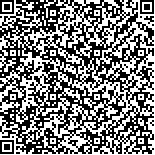| 引用本文: |
周德生,卢圣花,周达宇,刘建和,张宇星,葛金文.《五十二病方》的临床思维探讨[J].湖南中医药大学学报,2023,43(7):1245-1252[点击复制] |
|
| |
|
|
| 本文已被:浏览 1924次 下载 723次 |
| 《五十二病方》的临床思维探讨 |
| 周德生,卢圣花,周达宇,刘建和,张宇星,葛金文 |
| (湖南中医药大学第一附属医院, 湖南 长沙 410007;湖南省中医药研究院中医文献信息研究所, 湖南 长沙 410006;湖南中医药大学第一附属医院, 湖南 长沙 410007;湖南中医药大学研究生院, 湖南 长沙 410208;湖南中医药大学研究生院, 湖南 长沙 410208;湖南中医药大学第一附属医院集团衡阳县医院, 湖南 衡阳 421299) |
| 摘要: |
| 马王堆出土的医书《五十二病方》是我国现存最古老的中医临床医学著作。书中涉及内、外、妇、儿、五官等全科医学疾病谱。临床思维方面,其疾病观的逻辑链:不德(包括鬼神情志、有害气候环境因素、外伤邪侵、动物昆虫咬伤、饥饱伤食、不成人者等)—病症(52类疾病、108个病种)—养德(顺应自然及心性修养、巫方祝由、香辣食物)、归德(辛香药物外治内服、物理疗法、灸疗法、禁忌等防病治病)—数术(天文、历谱、五行、蓍龟、杂占、形法)—方技(医经、经方、房中、神仙);临床诊断方面,先辨别病类与病种,之后归纳主要症状与证候群;临床治疗方面,治求标本、治分缓急、辨治异同、三因制宜、随症治之等治则,治疗方法全面多样,结合方症相对论和互渗律组方用药,开创了中医早期治则学形成和应用发展的先河,其“辨病﹢辨证﹢方药”或者“辨病﹢方药”的临床思维方法,奠定了中医临床医学的基石。 |
| 关键词: 《五十二病方》 疾病观 方症相对论 互渗律组方用药 临床思维 |
| DOI:10.3969/j.issn.1674-070X.2023.07.014 |
| 投稿时间:2023-03-05 |
| 基金项目:湖南省中医药管理局湖南省马王堆医学研究中心项目。 |
|
| Clinical thinking of Wu Shi Er Bing Fang (Formulas for Fifty-two Diseases) |
| ZHOU Desheng,LU Shenghua,ZHOU Dayu,LIU Jianhe,ZHANG Yuxing,GE Jinwen |
| (The First Hospital of Hunan University of Chinese Medicine, Changsha, Hunan 410007, China;Institute of Chinese Medicine Literature and Information, Hunan Academy of Chinese Medicine, Changsha, Hunan 410006, China;The First Hospital of Hunan University of Chinese Medicine, Changsha, Hunan 410007, China;Graduate School, Hunan University of Chinese Medicine, Changsha, Hunan 410208, China;Graduate School, Hunan University of Chinese Medicine, Changsha, Hunan 410208, China;Hengyang County Hospital, the First Hospital Group of Hunan University of Chinese Medicine, Hengyang, Hunan 421299, China) |
| Abstract: |
| The medical book Wu Shi Er Bing Fang (Formulas for Fifty-two Diseases) unearthed from Mawangdui Han Tombs is the oldest existing clinical medical work of Chinese medicine in China. The book involves the general medicine disease spectrum of internal medicine, surgery, gynecology, pediatrics, ophthalmology, otorhinolaryngology and so on. In terms of clinical thinking, the logical chain of its concept of disease is as follows:going against law (emotional disorders caused by ghosts or spirits, other emotional disorders, harmful climatic and environmental factors, trauma, invasion of pathogens, animal and insect bites, irregular eating, dyspepsia due to improper diet, children's emotional disorders caused by little ghost, etc.)-diseases (52 disease categories, 108 diseases)-complying with law (conforming to the nature, cultivation of temperament, treatment by witch and incantation, taking aromatic and spicy food), compliance with law (internal and external administration with pungent and aromatic Chinese medicines, physiotherapy, moxibustion, contraindications, and other methods for disease prevention and treatment)-numerology (astronomy, calendar, five elements theory, augury with Shicao (Achilieae Herba) or tortoise plastron, miscellaneous divination, and traditional alchemy)-medical techniques (medical classic, classic formulas, sexual knowledge, pursuing immortality). In terms of clinical diagnosis, the book emphasizes identifying the types of diseases followed by summarizing the main symptoms and patterns. In terms of clinical treatment, the principles include treatment based on differentiating symptoms and root causes, prioritizing treatment according to the urgency, treatment based on differentiating similarities and differences, treatment considering three etiological categories, and treatment according to main symptoms. With the comprehensive and diverse treatment methods, selecting Chinese medicines to form formulas by the theory of relativity between formulas and symptoms and the law of mutual infiltration, the book created a precedent for the formation and application of early TCM treatment principles. Its clinical thinking method of "disease differentiation + pattern identification + formula and medicines" or "disease differentiation + formula and medicines" laid the foundation of the TCM clinical medicine. |
| Key words: Wu Shi Er Bing Fang (Formulas for Fifty-two Diseases) concept of disease the theory of relativity between formulas and symptoms selecting Chinese medicines to form formulas by the law of mutual infiltration clinical thinking |
|

二维码(扫一下试试看!) |
|
|
|
|




